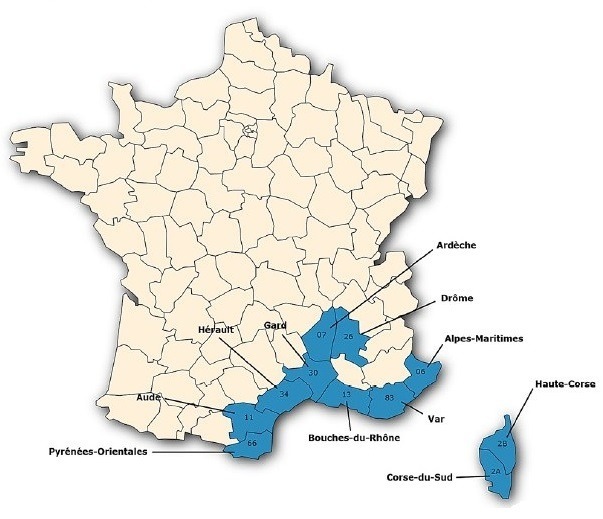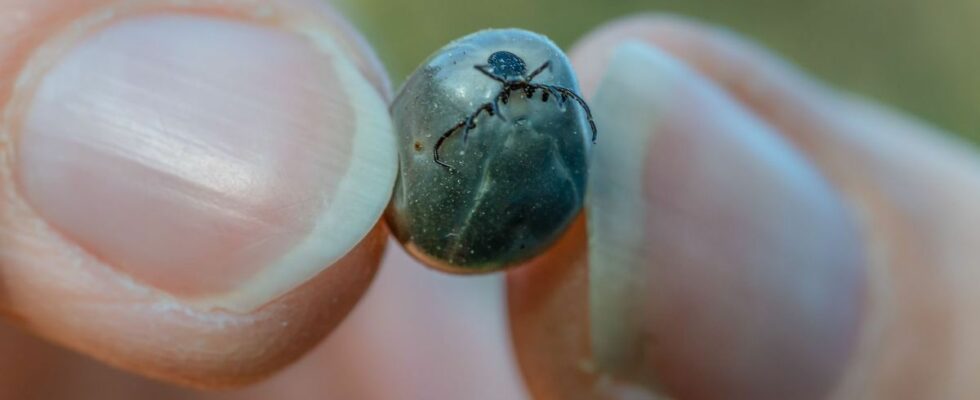Published on
Updated
Reading 4 min.
A man in Spain has died after being bitten by a giant tick. The tragic incident highlights the growing threat of Crimean-Congo hemorrhagic fever, a rare but potentially deadly viral disease similar to Ebola. Here’s what you need to know about the virus and its implications.
Man dies of Crimean-Congo haemorrhagic fever in Spain
The 74-year-old man went to a hospital in the city of Móstoles on July 19, reporting a fever and general malaise after being bitten by a tick in Buenasbodas, in the province of Toledo, in central Spain, a few days earlier.
On July 21, health authorities confirmed that the man was infected with Crimean-Congo hemorrhagic fever (CCHF). He was subsequently transferred to the isolation unit at La Paz-Carlos III Hospital, according to a statement from the hospital, published on July 22. The statement said at the time that he was in stable condition, but he ultimately died a week after it was published, according to a report CNN.
According to the World Health Organization, death usually occurs within the second week of illness, and people who recover typically begin to see improvement in symptoms nine to 10 days after becoming ill.
What is Crimean-Congo hemorrhagic fever?
No cases of Crimean-Congo hemorrhagic fever”has not been detected to date in France” recalled Public Health France. On the other hand, the authority warns of the risk of contamination, which is “now demonstrated” due to the presence of ticks on French territory, which can transmit this virus.
Crimean-Congo fever is an infection that can cause a flu-like syndrome in humans accompanied by digestive disorders, with a sudden onset: fever, chills, digestive disorders, dizziness, stiffness and pain in the neck, back pain, headaches, eye sensitivity, photophobia and, in rare cases, severe forms with uncontrolled bleeding”. This then results in a “hemorrhagic syndrome, the fatality rate of which reaches 30% in some countries” underlines Anses.
What are the prevention tips to avoid being infected?
The virus is therefore transmitted by the bite of an infected Hyalomma marginatum tick. It stands out from other ticks because it is larger and has striped legs. In addition to Corsica, it is found in the following departments: Pyrénées-Orientales, Aude, Hérault, Gard, Ardèche, Drôme, Bouches-du-Rhône, Var and Alpes-Maritimes.

To avoid being bitten, there are some easy-to-follow prevention tips. Public Health France recommends, particularly in dry areas where ticks are present, such as hiking trails, fields or vineyards, for example:
- When walking in nature, wear closed shoes and light-colored, covering clothing to better spot ticks on the surface of the fabric;
- Avoid walking through tall grass, bushes and low branches and use marked paths;
- If necessary, use skin repellents with marketing authorization (MA), while carefully following the usage recommendations;
- Inspect yourself when you return from your walks in the forest, in the scrubland and garrigue or in the garden, particularly in the folds of the skin without forgetting the scalp;
- In the event of a bite, immediately detach attached ticks using a tick remover, fine tweezers or, failing that, your fingernails and disinfect the wound;
- Monitor the sting area for several days and consult your doctor if symptoms occur (redness, fever, etc.).
“Skin repellents have limited effectiveness and their use should not replace the preventive measures mentioned above.” recalls SPF.
What to do in case of a tick bite?
The first thing to do if you are bitten by a tick is to remove it with a tick remover or fine tweezers. You should then disinfect the bite site and photograph the tick if possible.
Within 14 days of the bite, if you develop a fever or unusual symptoms, consult a doctor, indicating that you have been bitten by a tick and showing the photo.
Should we be concerned about discovering this virus on French soil?
Dr. Gérald Kierzek, emergency physician and medical director of Doctissimo, points out that this type of infection of diseases that were previously considered “tropical” is likely to increase: “We will have to get used to these announcements. These are not new viruses, but known viruses that are endemic in West Africa and which, like Lassa fever, are likely to arrive in mainland France due to travel and global warming.“For the time being, these are episodic cases that French medicine knows how to manage.
Crimean-Congo haemorrhagic fever, a notifiable disease
Like tick-borne encephalitis or Ebola, Crimean-Congo haemorrhagic fever is a notifiable disease. By being reported quickly, it allows the authorities to take the necessary control and prevention measures.
But it will not be sought during a classic serological examination carried out after a tick bite. A tick can contain around thirty pathogenic elements, whether viruses, bacteria or parasites” recalls Bertrand Pasquet, president of the Chronilyme association. “This can therefore modify the clinical picture, after a bite, in humans”.
According to him, this problem is not being sufficiently taken into account by the health authorities at present.For them, no other pathology is really taken into account, apart from Lyme disease caused by the Borrelia bacteria or tick-borne encephalitis. As a result, few doctors prescribe suitable serologies, apart from these. But we see that there is in reality a whole range of tick-borne diseases, for which we are asking for more concrete consideration by the establishment of a dedicated national plan.“.
The risk of the appearance of Crimean-Congo haemorrhagic fever is possible in France, according to Anses, which calls, for its part, to “develop research” to find a vaccine against this virus, which does not exist to date.
